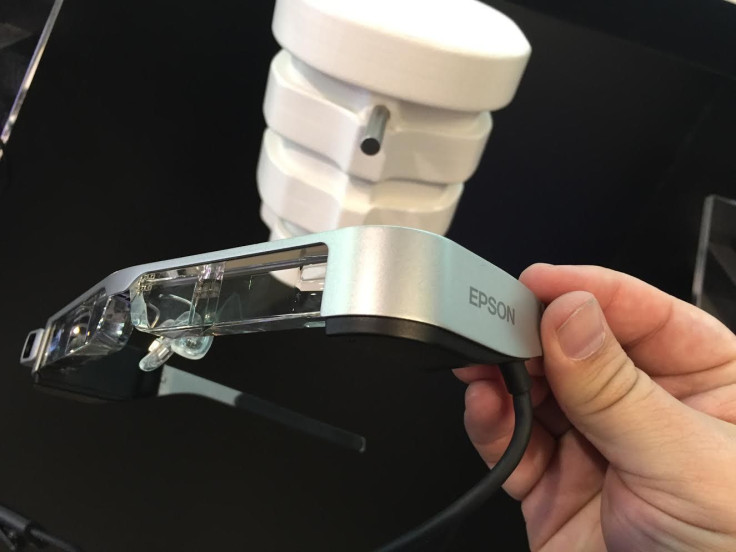Experts and technology companies have spent hours upon hours at Mobile World Congress this year talking about the future of VR. Will game-centric devices lead the charge? What is the best way to make the devices more mobile with your smartphone? EPSON says the future of VR could soon be made obsolete with augmented reality.
Eric Mizufuka, product manager at EPSON, said when you look at industry reports they always say augmented reality is 5 to 10x away in a long-term forecast compared to VR. That will all change, he says, the day AR gets a field of view of 110 degrees.
“Once you get 100+ field of view, there’s no need for VR,” Mizufuka told iDigitalTimes.
During MWC in Barcelona EPSON debuted the third iteration of its AR glasses, the Moverio BT-300, which has a field of view of 23 degrees. Field of view determines the screen size you can see when wearing the glasses. Obviously 23 and 100+ degrees are a long ways off but Mizufuka said the company would get there. Right now he said the focus was on keeping the device light while enhancing the screen quality.
The BT-300 weighs only 2 ounces, Mizufuka said, compared to the also recently unveiled LG 360 VR headset that weight 4 ounces. It has up to 6 hours of battery life and features an OLED screen that can play 2D or 3D videos. The glasses are connected by a wire to an Android powered device, but are otherwise very mobile.
He said as the technology gets better it would minimize the need for virtual reality due to several issues he sees with VR including weight, mobility issues and the necessary accessories required to operate a device to its fullest potential.

Mizufuka said one of the main improvements of the BT-300 compared to past models and other AR heads is the persistence of a gray box. He said to combat that problem, which frames items no matter where you look with AR glasses, the BT-300 illuminates individual pixels for a crystal clear image.
“It’s the highest resolution out there,” Mizufuka said. “People hold the iPhone as the gold standard for display… our pixel density is over 8x that of an iPhone retina display.”
Mizufuka said EPSON only recently began investing more into its own products.
“Historically our core technology has gone into other people’s products; motion sensors in the Wii controllers, e-ink screens in the Kindles, the screens of some of the first iPhones,” he said. “Now we’re kinda taking a different direction and commercializing our own technology that we see had big potential.”
Right now, most of that potential surrounds the commercial and enterprise space as opposed to the general consumer. Mizufuka said the use cases for the BT-300 range from a dentist using it to scan teeth to drone operators being able to safely keep their eyes on the drone while they are flying.
“For VR, the killer application is entertainment and gaming,” he said. “For AR, at least for this point in its life cycle, it’s more niche applications.”
He says the BT-300’s completely transparent viewing, situational awareness, 5-mega pixel front-facing camera and hands-free 360-degree environment set it up to be useful in many industrial situations.
“Unlike VR you can wear this and do maintenance on your engine and get overlay instructions on how to do that,” Mizufuka said.
While Mizufuka and EPSON say the BT-300 is mostly a niche device right now, the technology will change sooner than later.
“I think, especially in the virtual reality space, a lot of people think augmented reality is really far away,” Mizufuka said. “It’s a lot closer than they think.”
The BT-300 does not have an officially announced price but EPSON said smart glasses would go on sale in late 2016. Stay with iDigitalTimes for updates about VR and AR technology and continue to follow our coverage of MWC in Barcelona.

















